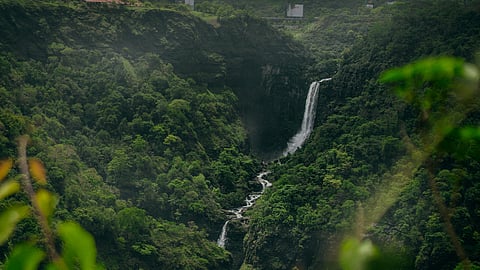
- Destinations
- Experiences
- Stay
- What's new
- Editor’s Picks
- Responsible Tourism
- CampaignsCampaigns
- Subscribe

The Pune district administration has imposed prohibitory orders at several popular picnic spots, including Bhushi Dam and the Pavana Dam region, to ensure the safety of tourists during the monsoon season.
The order, effective from July 2 to 31, prohibits gatherings of five or more persons, restricts individuals from entering deep water bodies, and bans taking selfies and creating reels at these sites.
The administration has introduced safety measures for hazardous tourist locations, including identifying and demarcating dangerous areas, having lifeguards and rescue teams present, and installing warning boards.
This decision was made following an incident on Sunday when a woman and four children were swept away at a waterfall near the Bhushi Dam, a popular picnic spot in Lonavala, Maharashtra.
Under the newly implemented Bhartiya Nagarik Suraksha Sanhita and the Disaster Management Act-2005, section 163 will be enforced at specific spots across different tehsils in Maharashtra.
Violators will face legal action for not complying with the prohibitory orders, which will be enforced at specific sites such as waterfalls, dams, and other tourist spots in different tehsils.
In a related action, the Lonavala Municipal Council and the Central Railway demolished over 60 makeshift shops near the Bhushi Dam during an anti-encroachment drive.
The district collector has instructed the local administration to take action against unauthorized structures around tourist spots.
The safety measures are specifically focused on locations where accidents involving tourists have occurred, particularly during the monsoon season.
The implementation of enhanced safety measures is crucial, especially in tranquil areas like the Pavana Dam in Lonavala where several tragic incidents of drowning have been reported.
Rescue organisations like the Vanyajeev Rakshak Maval (VRM) have reported recovering multiple bodies from various water bodies in Maval tehsil this year.
Local officials have been tasked with identifying and marking dangerous spots at tourist places with perimeter lines and warning boards and putting in place measures to prevent loss of life, including deploying divers, rescue boats, lifeguards, and ambulances with first aid facilities at water bodies frequented by tourists.
